In autumn, ever noticed all the seeds scattering? Plants are launching their offspring into the world! But since plants aren't mobile, how do they spread their seeds? Discover the amazing ways seeds disperse and plants grow.
If you are a seed collector you probably have noticed the many ways Mother Nature has to disperse seeds to ensure a new generation of plants.
Falling Fall from the Tree
It is important for the seeds of many plants, especially perennials, to travel away from the parent plant—far from the tree. If all the seeds grew close to each other, they would have to compete for space, sun, water, and nutrients—and eventually die from overcrowding. Nature has developed mechanisms to avoid this.
Seeds of most annual plants can just fall to the ground since the parent plant won't be there next spring to compete. Since seeds don't have legs they depend on other means of travel.
Blowing in the Wind
Ever picked up a dandelion and blown on it? Milkweed, cattails, asters, cottonwood, and dandelions rely on their fluffy parachutes to carry them away to a new location.
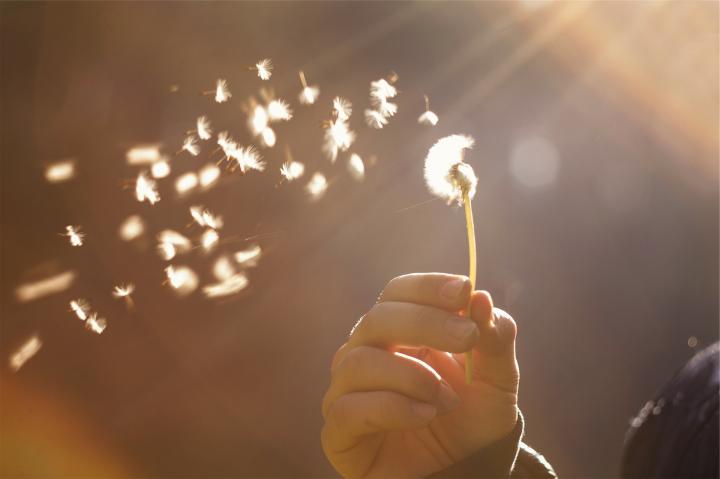
Sometimes dandelions have a little human help dispersing their seeds to the wind.
Since the chances of them falling to earth in a perfect spot to grow are pretty slim, these plants produce hundreds of wind borne seeds from each flower.
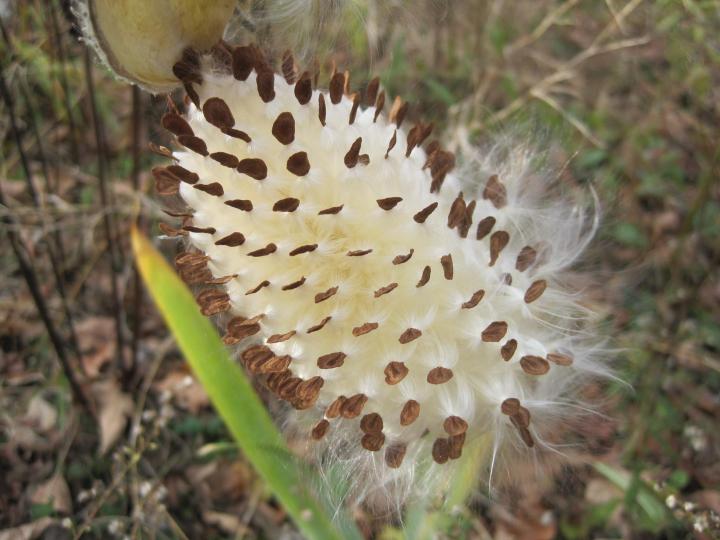
Maple and sycamore trees produce twin seeds with attached propellors. Perfectly balanced, they whirl around like tiny helicopters in a good breeze, floating far enough to sprout away from their tall parents.
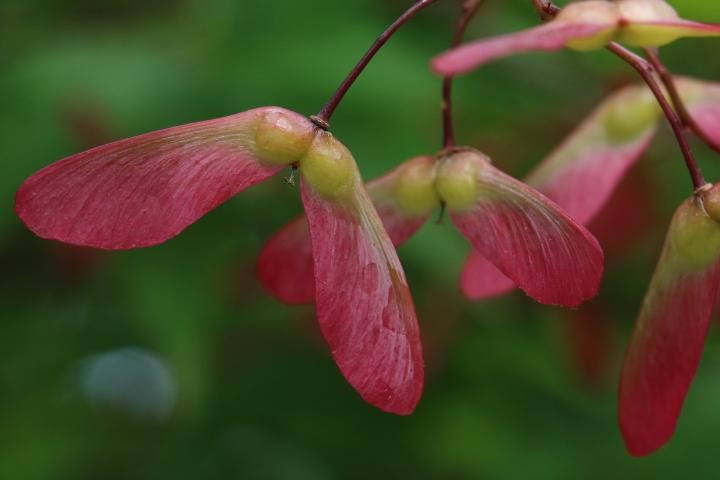
Maple seeds with their twin propellors get ready to launch.
Ash trees seeds just have one wing so they don't spin in the same way but do waft along on the wind long enough to get out of their parent's shadow.
Hitchhikers
Passing animals and people do their part to disperse sticky seeds like burdock and sea holly. They have hooks and spines that become attached to fur and clothing so they can be transported far from their original location.

The hooks on burdock spines are like velcro, and will stick tight to passing animals... and people!
Pepper Shakers
Some plants like columbine, poppies, foxglove, and nicotiana produce hundreds of miniscule seeds, like finely ground pepper, that are held in a larger seed pod. As the plants mature the tops of the pods spread open and eventually the tall stalks topple over spilling the seeds on the ground.
The length of the stalk casts the seeds far enough away from the parent plant to give them a fighting chance. The sheer number of seeds produced also helps their rate of survival.
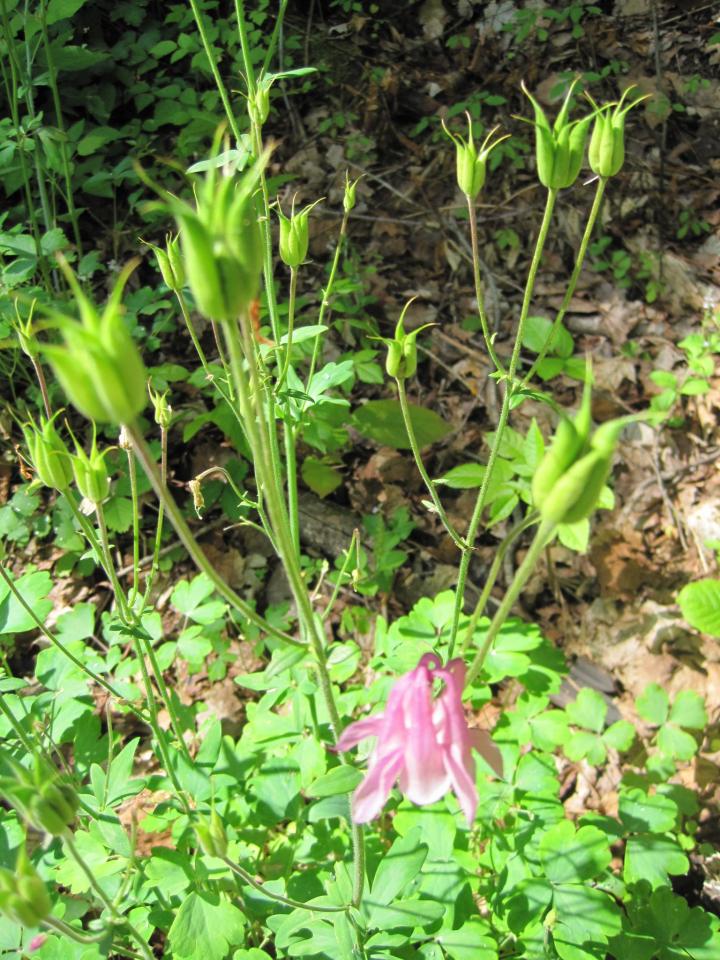
Once these columbine seed pods mature later in the summer, a strong wind or heavy rain will topple them over so they can spill their seeds.
Ejectors
Instead of just dropping their seeds to the ground, many flowers shoot them out. Impatiens, balsam, and jewelweed are nicknamed touch-me-not for the way their ripe seed pods explode open at the slightest touch, launching their seeds away.
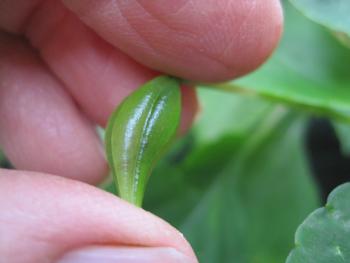
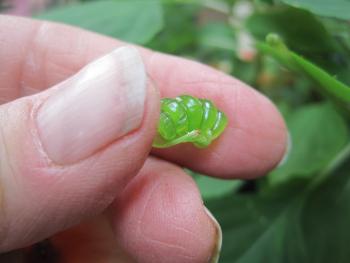
The impatiens seed capsule on the left is ready to pop. Just a littler squeeze is all it takes for it to explode and turn inside out, expelling the seeds.
The pods of lupine, baptisia, geraniums, violets, and peas twist as they split open, ejecting the seeds slightly away from the parent plant.
Fire & Water
Some pine trees have cones that need high heat, like from a forest fire, to open up and release their seeds.
Any plants growing near water have a good chance of their seeds floating downstream to a new location.
Animals & Birds
Along with spreading seeds that have stuck to their fur, animals and birds disperse many of the seeds from the fruits ands berries they have eaten.
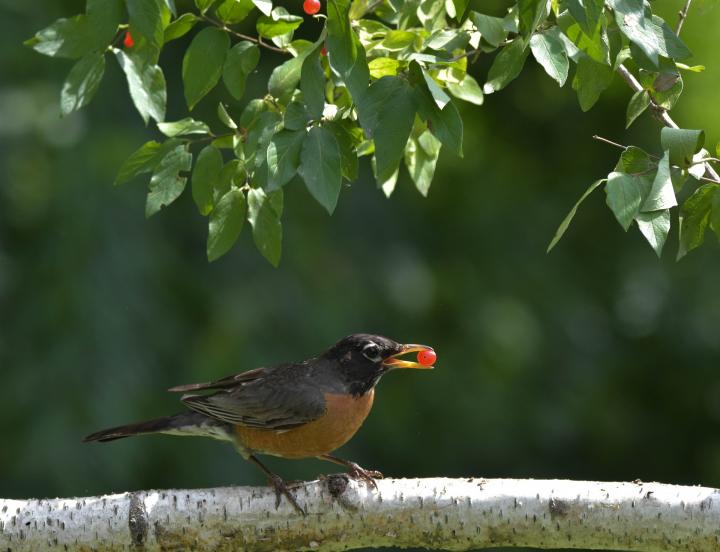
Birds can spread the seeds of raspberries and grapes or poison ivy and bittersweet, they don't discriminate.
Once the soft outer portion of these fruits has been eaten the hard inner seeds pass through undigested and drop along with some fertilizer in their new home, giving them a great start in life.
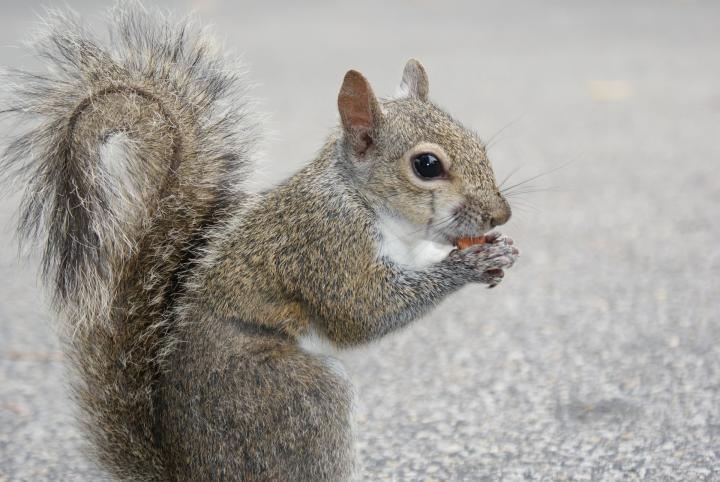
Acorns are often collected and stored in caches away from the trees they fell from by industrious but forgetful chipmunks and squirrels. Any uneaten acorns will do their best to sprout in the spring.
Gravity
As I said earlier, most annuals don't need to employ drastic measures to spread their seeds, they can just rely on gravity to do the job for them. Large sunflowers droop their heads as they mature and their seeds will eventually drop to the ground. Whatever seeds the birds and squirrels haven't eaten will sprout in the spring.
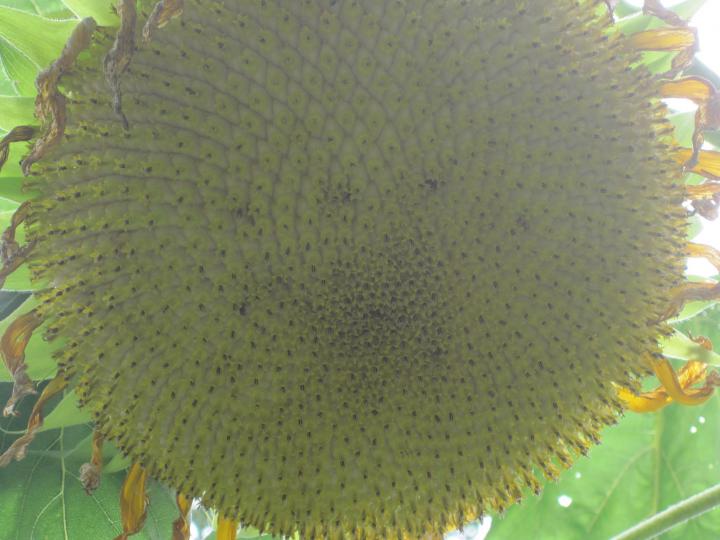
If you have wondered where some of the surprise plants that pop up your garden each spring come from, now you can guess how they got there.

How far do you think these angelica seeds will travel?
For every cleaning up the yard, consider leaving those seed heads for the plants, pollinators, birds, and you!
See our Fall Cleanup Tips for a Better Spring Garden.























